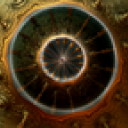energy, environment, e-motion


.


I wouldn't have a clue, dave..... All i know is our rock is revolving at a fair speed.... At the same time, it's wobbling to and fro.... And again at the same time, it's hurtling through space at some incredible speed... Now that's alot of fucking energy.... Perhaps long after we're all gone, some bright spark will figure a way to harness that.....
The other thing I've always wondered about is magnetics.... I'm sure as kids we've all tried to put 2 similar magnets together, and they repel.... Perhaps another bright spark could set up some sort of turbine....




This forum is dedicated to bringing forth information to increase awareness and lifestyle choices. It is hoped that all posts are treated with respect that views will and can differ and whether there is agreement or disagreement is not as important as the fact that the sharing leads to growth.
Here is the first link that highlights a great man, Nicola Tesla and why it is important to consider "out there" perspectives as they can lead to new insights. Sometimes not knowing and not agreeing, allows the mind to open to new possibilities.
http://releaseteslasresearch.weebly.com/
Please feel free to add any other interesting info you have or come across.